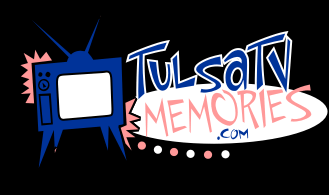
"Letters from Iwo Jima";
Having been an active broadcaster for over fifty years, I know the definition of the Fairness Doctrine, something all broadcasters were mindful of until several years ago. Now, only public broadcasters are held to account for maintaining a balance in the news and public affairs they transmit. "Play Misty For Me" notwithstanding, we all know that Clint Eastwood isn't a broadcaster. But he is quite mindful, especially here in his later years (just as some broadcasters today), that being fair is important, and, obviously, best done without "benefit" of someone or thing leveraging a kind of "fairness." (Alas, this not so perfect world.) Eastwood is likely best described now as a director of two extraordinary movies, shot back-to-back, about WW II, and the story of one of its most bloody battles: Iwo Jima. Last fall, the first installment was released: "Flags of Our Fathers" (reviewed here by Chew). And now comes the other: "Letters from Iwo Jima." The first film was for us Americans. The second is for the rest of the world...and any Americans who might wish to see it. I saw it today. I'm glad I did.
During the 2-hour and 20-minute running time, Americans are seldom seen up close in "Letters from Iwo Jima," except for one: a US Marine who's been shot and wounded by a Japanese soldier. Men rush to the fallen American and drag him into a cave on Mount Suribachi, where the battle rages on for Iwo. In Japanese, one grunt shouts, "Let's finish him off in here?" A man outranking the grunt, says, "No! Give him some water!" That's not like the WW II movies I saw about Japanese soldiers when I was a little boy. There was never any mercy shown to G.I.s by what we called them then. The Japs were the enemy, and we Americans, in the mid 1940s, were needed to remain agitated about how much Japan hated us…and, in turn, how much we hated The Empire of the Rising Sun. Mr. Eastwood is attempting to update us with this second film; showing again, as other substantive war movies, that the enemy is human, just like us; with parents and children and other loved ones who mean as much to them as ours mean to us. The Marine who is shot and taken captive is given a drink of water and medically treated by his captors, but, finally, succumbs. But before he dies, the young American tells one of them who understands English that he comes from a place in the U.S. called, Oklahoma. Since nearly all Japanese military personnel died in the battle for Iwo Jima (about 21,000), you may wonder how any of this is known. The 'letters' in the film's title refer to several hundred letters unearthed in Iwo Jima's soil decades later after the 1945 battle. The screenplay is based on the book, "Picture Letters From Commander in Chief " by Tadamichi Kuribayashi. (More about him below.) The script is by Japanese-American screenwriter Iris Yamashita from a story by Yamashita and the Oscar-winning screenwriter, director and producer, Paul Haggis. The film "Crash" is a work by Haggis. It won the Best Picture Oscar last year. Haggis also wrote the script for Eastwood's "Million Dollar Baby," which won an Oscar for Best Picture in 2004. (both reviewed here by Chew)
A word about the actor Ken Watanabe and his role as the Japanese hero of the battle for Iwo Jima: Lieutenant General Tadamichi Kuribayashi. Watanabe, who was nominated in 2003 for a Best Supporting Actor Oscar in the film, "The Last Samurai," is striking in his performance as the man in charge of holding Iwo for Japan. To my eyes, Watanabe could be "the much younger half-brother" of the late, great American film actor, Gregory Peck. Some of Peck's memorable cragginess kept coming to mind as I watched Watanabe, in uniform as Kuribayashi, striding across the blackened sands of the historic Pacific island. "Letters" and "Flags" were filmed together. The wide shots of the American Armada on the Pacific and aircraft flyovers are seen in both pictures. Most of "Letters'" tighter scenes are shot without vistas of any kind; mostly in caves, among small jagged hills, or in darkness. I venture the thought that doing both films this way should enhance profits for the producers: Stephen Spielberg ("Schindler's List" "Saving Private Ryan), Robert Lorenz ("Mystic River") and Clint Eastwood. If you haven't seen either picture, I suggest taking them in the order they've been released: first the American side, then the one about the Japanese. The message is pretty much the same. There are honorable people on the American side. There are honorable people on the Japanese side, with bad guys on either. It's something we're not supposed to think about when fighting a war. And as both films have it, can't think about when fighting for your and your comrade's life. As I've said before on this web site, "Thank you, Mr. Eastwood." Your films should make you proud, they do me, even if I must, as a viewer, endure the re-enactment of so many torturous deaths. Which reminds me: The day "Dirty Harry" "turns in his badge" is a day on which I'll weep, for there is no one in the Art of Cinema today who can best impart the miracle and wisdom of men bonding, and how tough guys can be tender without losing their hard-ass exterior.
|